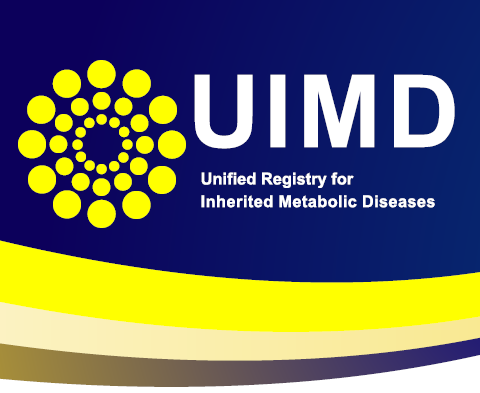Unified registry for
Inherited Metabolic Disorders
What is U-IMD?
The Unified European Registry for Inherited Metabolic Disorders (U-IMD) is the first observational, non-interventional patient registry that aims to establish a comprehensive patient registry that will encompass all 1600+ IMDs and subgroups, providing a valuable resource for healthcare providers treating patients with these complex disorders.

Data gathered in the U-IMD is pseudonymized, ensuring privacy and data protection. Members can only access their own data and always retain full data ownership. Members that use the registry for data entry are also responsible for ensuring that their ethical authorization to collect data in the U-IMD is updated and are responsible for the application of national guidelines and directives concerning patient consent. Patient involvement is secured through the patient advocacy groups organized within MetabERN. Usage of the entire U-IMD datases is governed by the U-IMD Consortium.
U-IMD coverage: 35 HCPs in 12 countries
Patient enrolment by country
Number of all registered patients: 3861
Aims
The project has three major activities:
- Establishing the U-IMD patient registry as a tool of MetabERN.
U-IMD will fully implement the common data elements of the European Platform on Rare Disease Registration (EU RD Platform) and will be integrated into the European Rare Disease Registry Infrastructure (ERDRI). U-IMD will be the first unified European registry that encompasses all IMDs. - Upgrading already existing IMD registries to the standard of U-IMD, starting with the registry of the International Working Group on Neurotransmitter Related Disorders (iNTD).
- Developing a standard for minimal core data sets shared by the MetabERN and the European Rare Kidney Disease Reference Network (ERKNet).
Governance and structure
U-IMD is coordinated by Heidelberg University Hospital and consists of the following three bodies:
(1) Members Board: it comprises all MetabERN members that signed the U-IMD letter of agreement. It has an advisory function and it is the primary decision maker of the body. It secures patient involvement through the patient advocacy groups organized within MetabERN enjoying all obligations and privileges of a board member.
(2) Steering Group: it consists of the Work Package Leaders, one official representative from each of the three existing IMD networks (E-IMD, E-HOD, and iNTD), the MetabERN coordinator, and a member and/or representative of a patient advocacy group. The Steering Group meets regularly and coordinates the implementation of the project according to the milestones and deliverables laid out in the project plan.
(3) Work Packages (WP): they contain all specific tasks to be fulfilled to reach the project aims. U-IMD registry is composed of 4 WPs (Coordination, Dissemination, Evaluation and Patient registry) which form the centres of the operational work within the project.
How to join U-IMD?
Becoming part of U-IMD is possible for all health care providers which are Members of MetabERN and also for voluntarily collaborating providers outside of MetabERN. U-IMD is intended to be used by physicians that are treating patients with IMDs.
- Contact the Registry Coordinator with the expression of interest by e-mail and wait for the evaluation of your request by the Steering Committee
- Sign the U-IMD Consortium Agreement
- Prepare and submit ethics application for U-IMD to your local Institutional Review Board (IRB) respecting the national and local standards
- Start enrolling patients and entering data
